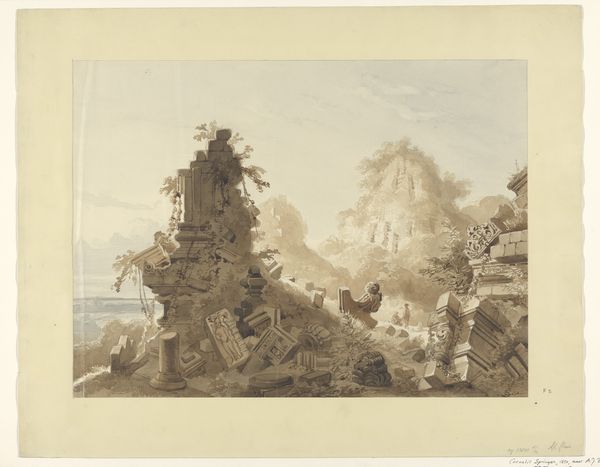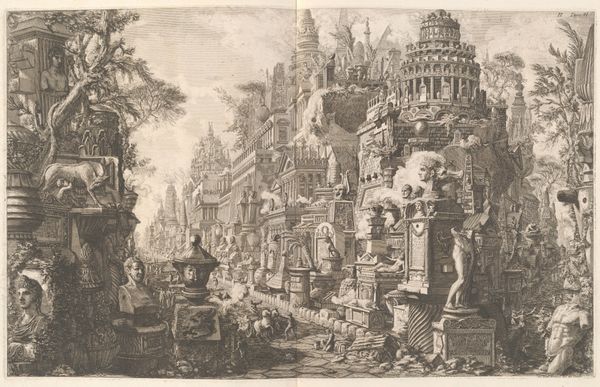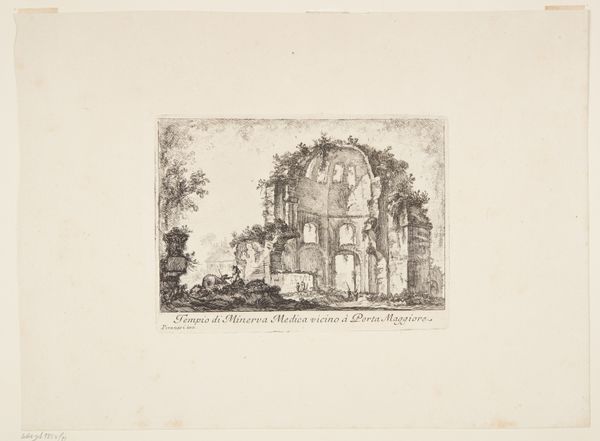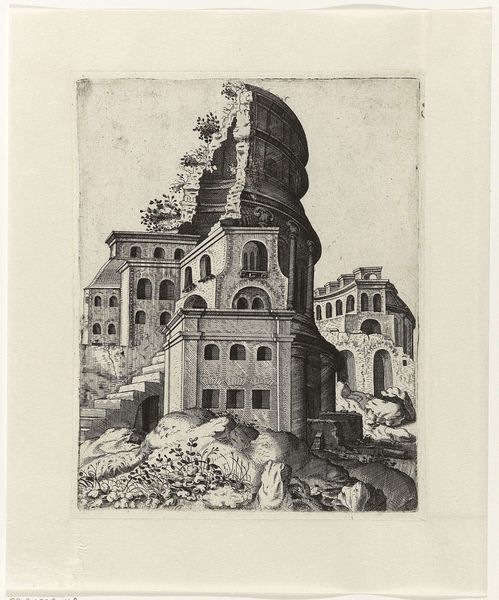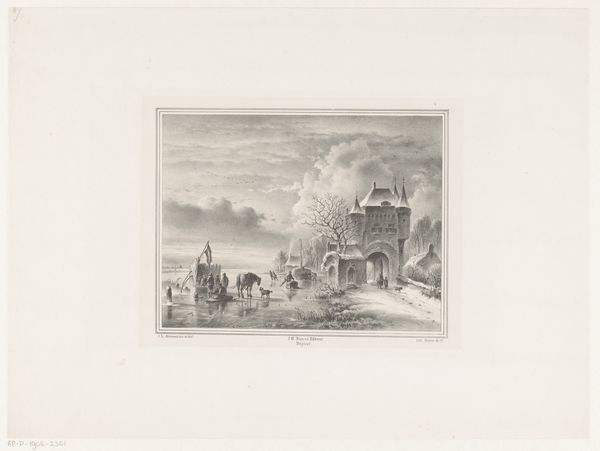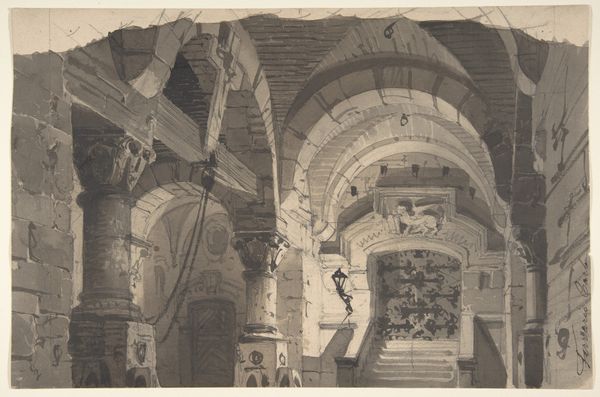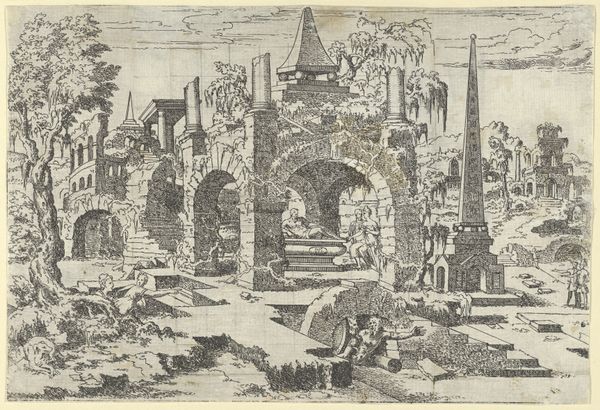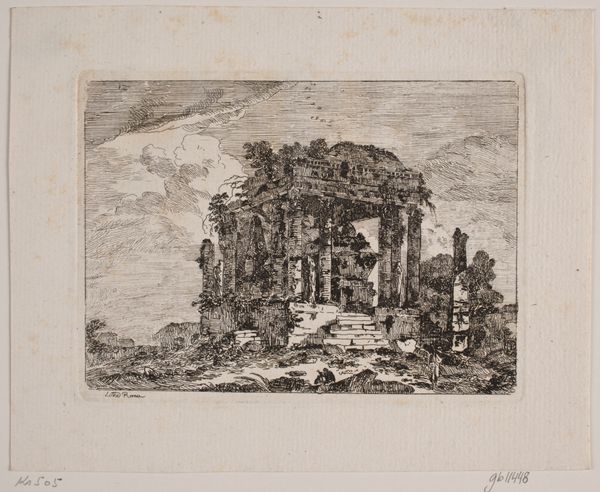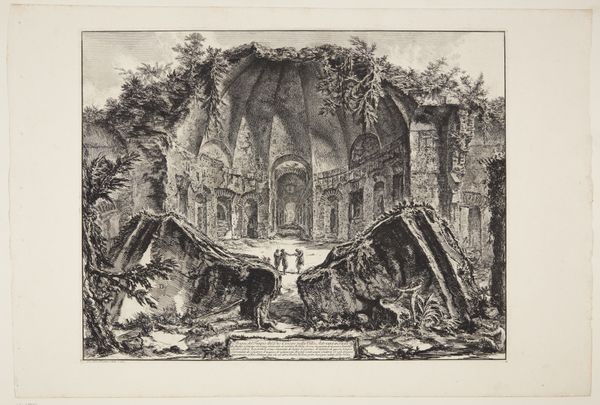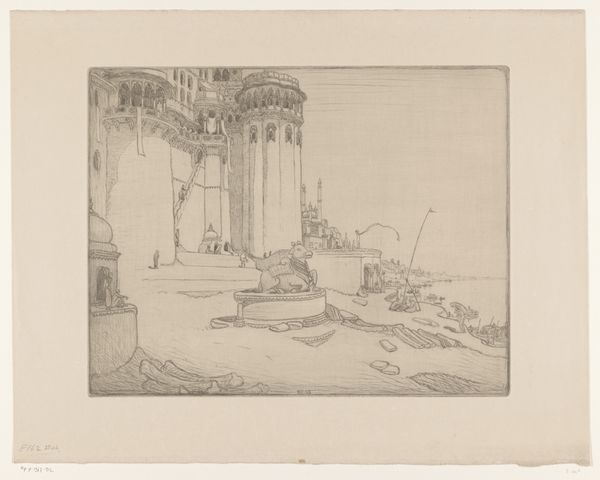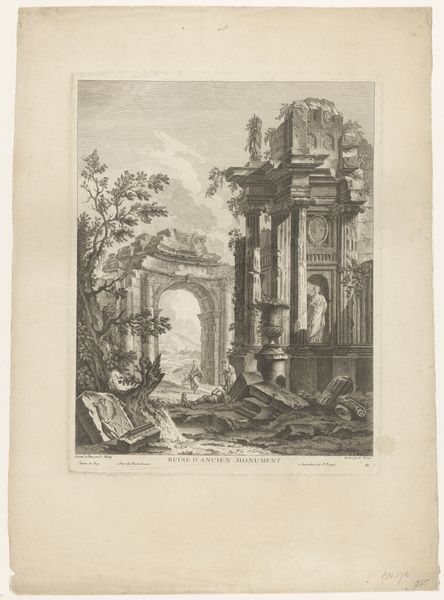
Gezicht op de ruïne van Candi Sewu by Yogyakarta, Midden-Java c. 1827 - 1891
0:00
0:00
Dimensions: height 382 mm, width 513 mm
Copyright: Rijks Museum: Open Domain
Cornelis Springer made this watercolor drawing of the ruined Candi Sewu temple complex near Yogyakarta, Central Java. The image is more than just a record of a place; it reflects the complex relationship between the Netherlands and its colony, the Dutch East Indies. During the 19th century, Dutch artists often depicted scenes from the colony. This suggests a growing interest in and a desire to document the region. But it also suggests a power dynamic. Springer's ruin evokes a sense of romantic decay, filtered through a European artistic lens. What's particularly interesting is how it frames the site as an object of aesthetic contemplation. The ruin becomes a symbol of a lost past, ready for the Western gaze, rather than a living, breathing part of Indonesian culture. To truly understand such an image, we need to look at travel accounts, colonial archives, and the work of Indonesian artists and historians. Only then can we fully appreciate the complex cultural and political context in which art like this was created and consumed.
Comments
No comments
Be the first to comment and join the conversation on the ultimate creative platform.

